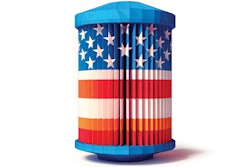Show me a company that has never made a mistake in serving a customer, and I'll show you a company that is in deep denial. Every company — no matter how excellent its products or employees — occasionally makes a mistake. How those companies and their employees respond to those mistakes, however, is what separates successful, customer-service-driven organizations from the rest of the pack.
Companies that are committed to service recovery know they can win customers for life by solving those customers' problems. They go beyond the call of duty to make sure their customers are happy — with their products and their service. If it is within their ability to solve customers' problems, they will move heaven and earth to do so.
Research shows that only one out of 26 people complain when they have a problem with a business. Sixty-three percent of people who have a problem that involves a purchase of less than $5 won't do business with that company again. Ninety-one percent won't do business with the company if their problem involves a purchase of more than $100. That's pretty serious.
Many executives don't understand service recovery. They don't know what it is, how to provide it or how it impacts the company's bottom line. If they don't know these things, how can they expect their employees to practice service recovery. And, if those employees don't practice it, the company will not succeed.
Service recovery is simply a matter of taking three steps when a customer is dissatisfied. First, apologize. Then take responsibility for the problem. Finally, give the customer something of value as a way to get him to return. The goal is to turn dissatisfaction into unqualified satisfaction.
The problem with service recovery is that many employees, because of their egos, don't want to say they're sorry. They believe that the customer is lying and, rather than apologizing for the error and taking steps to correct it, will do just about anything to protect their egos and the company's treasury.
For service recovery to work, the magic must occur at the front line. Employees must be trained and encouraged to practice service recovery and to send customers home with a smile. An apology and correction of the mistake is part of that process, but service recovery is moving it to a higher level. You must follow that up by giving something to the customer. It doesn't have to have a hefty price tag, but it must have value to the customer and show that you are sincere in your concern for that customer's satisfaction and your desire to retain her business.
Let me give you a few examples. If you own a restaurant and a customer complains that the food was cold when it arrived at the table, give that customer a free dessert. A software company can give the customer a free upgrade. A bank can give a free box of checks. A car dealership can offer a free oil change. An airline can upgrade a passenger to first class.
Every company has something of value it can give away that won't cost it a lot of money. The key is to identify those things and use them in service recovery. In the end, service recovery is 10 times cheaper than advertising — and at least 10 times more powerful.
The single goal of every company should be to have overly happy customers. You want to turn any customer dissatisfaction into loyalty, to have that customer go out and tell every friend, relative, and neighbor what you did for him.
Management needs to train employees to be on the alert for dissatisfaction and to solicit complaints. Why would you do that. Because when customers complain, they are giving you another chance to keep them as customers. Service recovery is an opportunity not only to salvage a relationship, but to cement it. Management also needs to recognize and celebrate those employees who use service recovery and to correct those who do not.
The purpose of service recovery is to prevent customer defections. If you solve your customers' problems and resolve their complaints, they will stay with you. When used properly, service recovery can move a customer from hell to heaven in 60 seconds or less. In each customer complaint is an opportunity to win that customer's long-term loyalty. Practice service recovery, and your customers won't dream of leaving you.








































